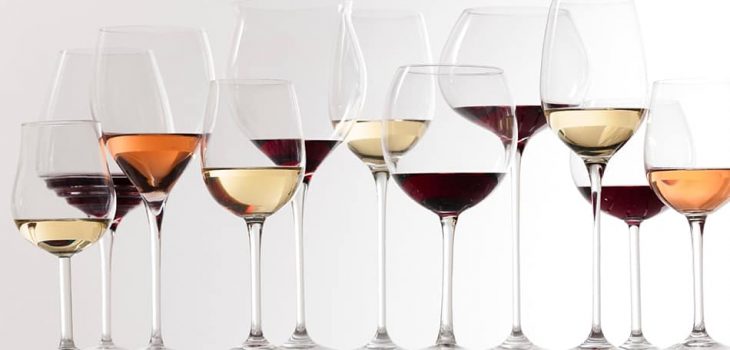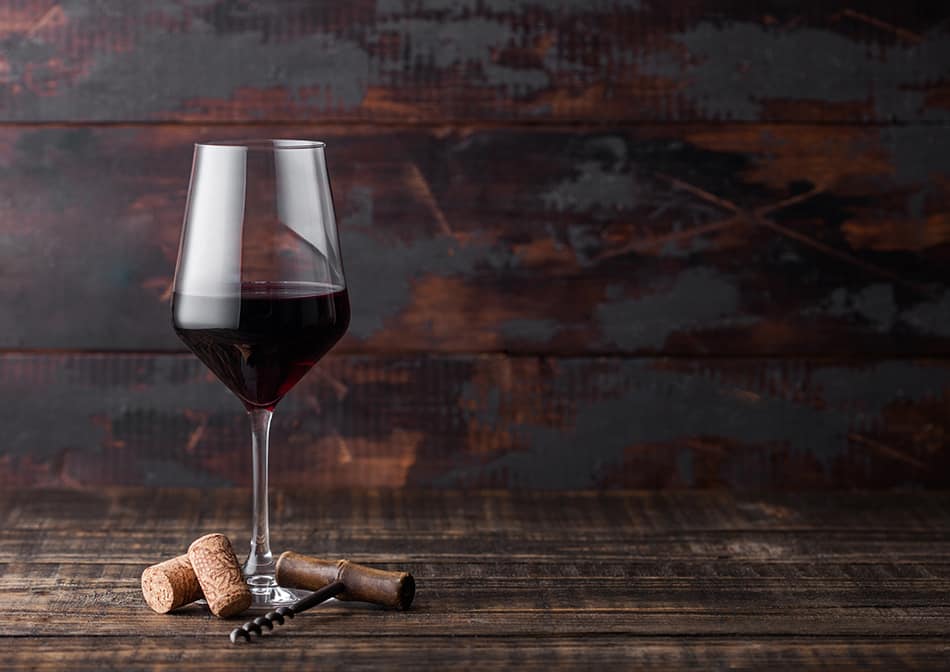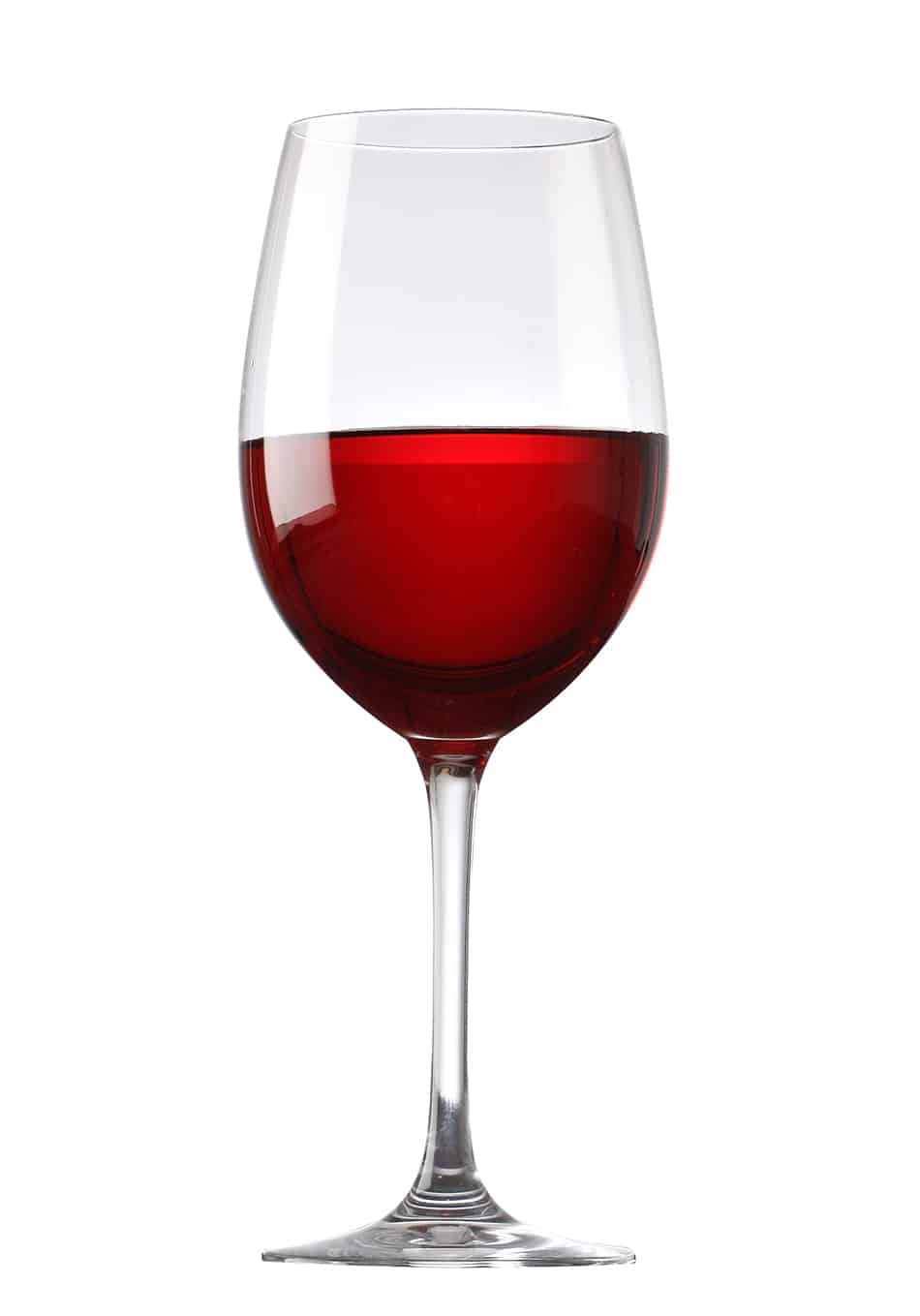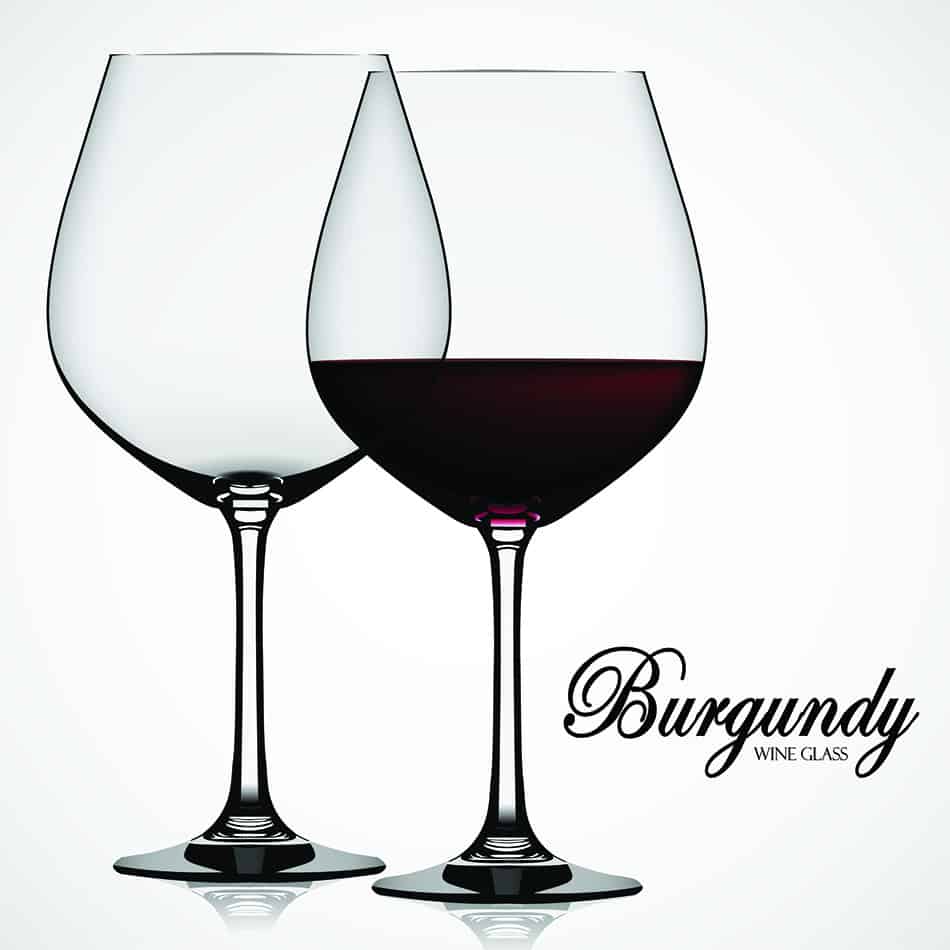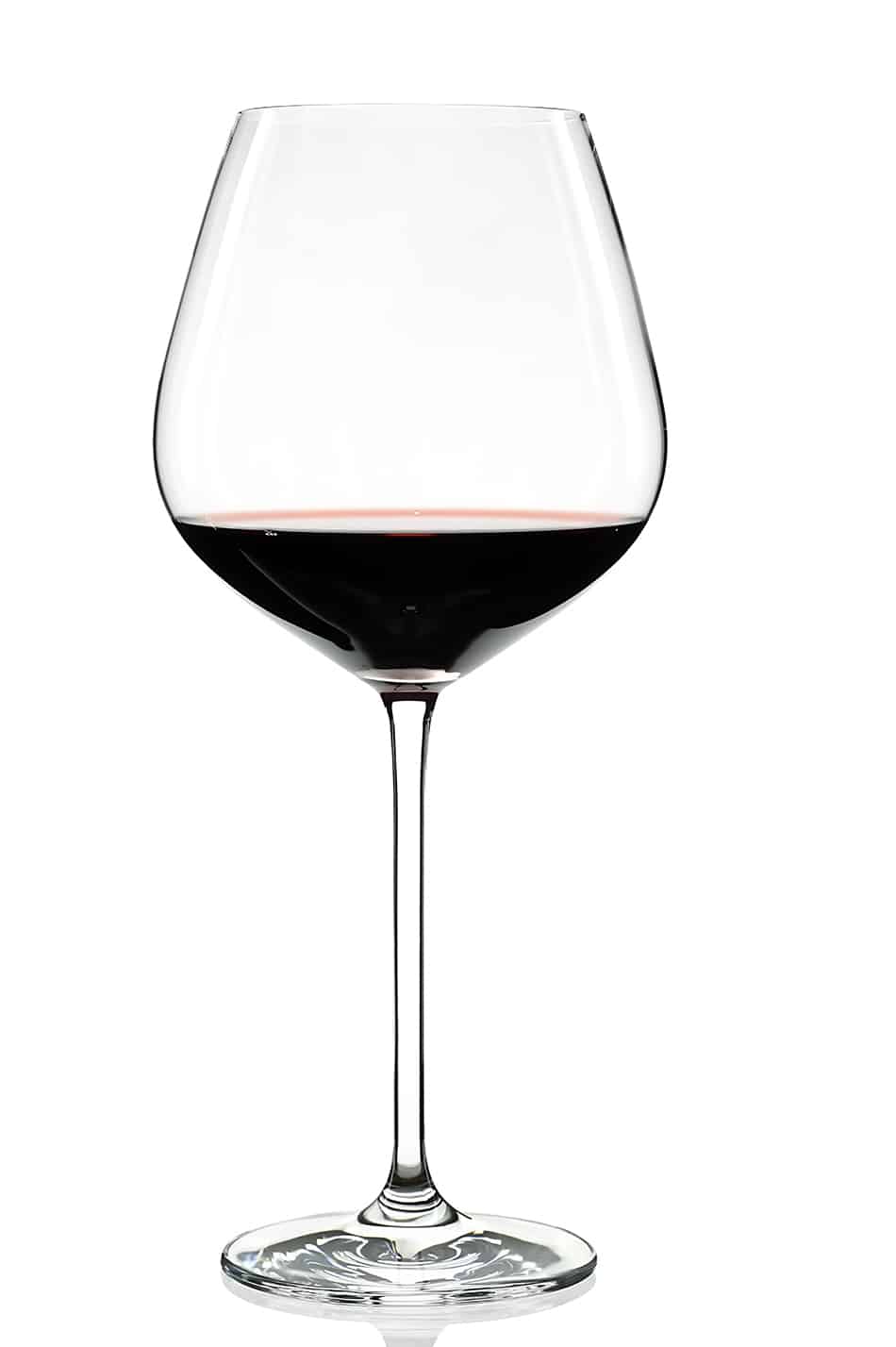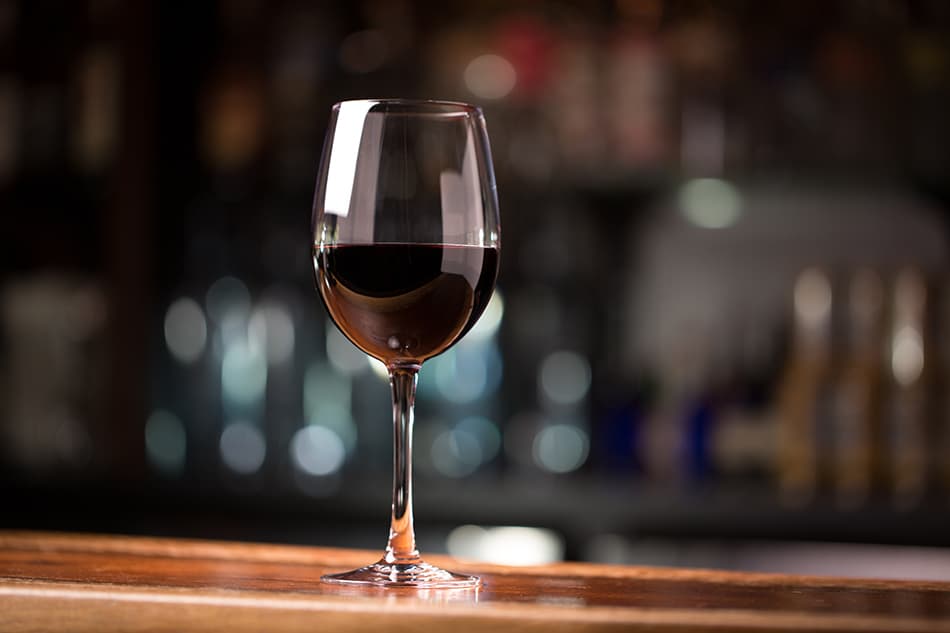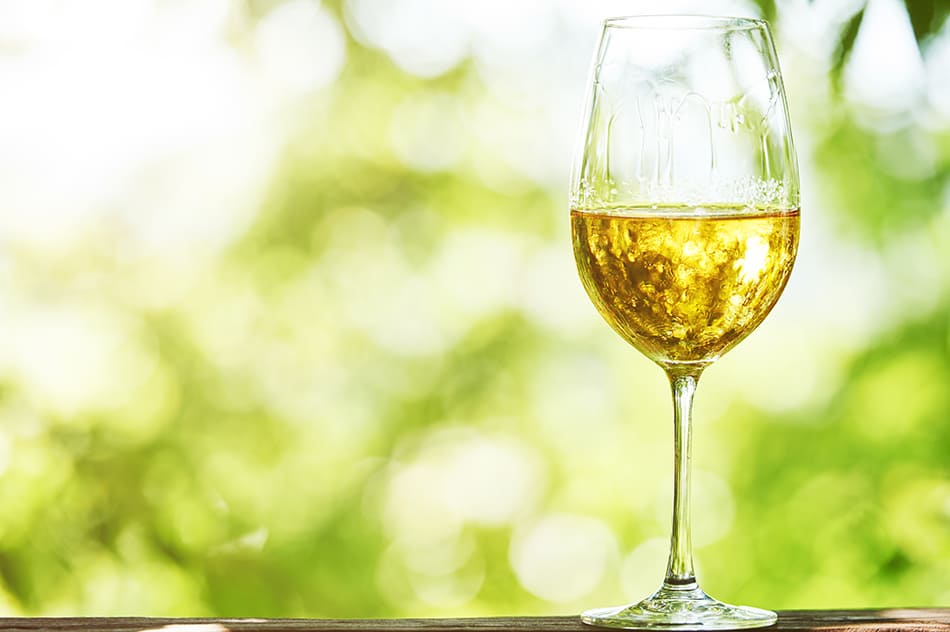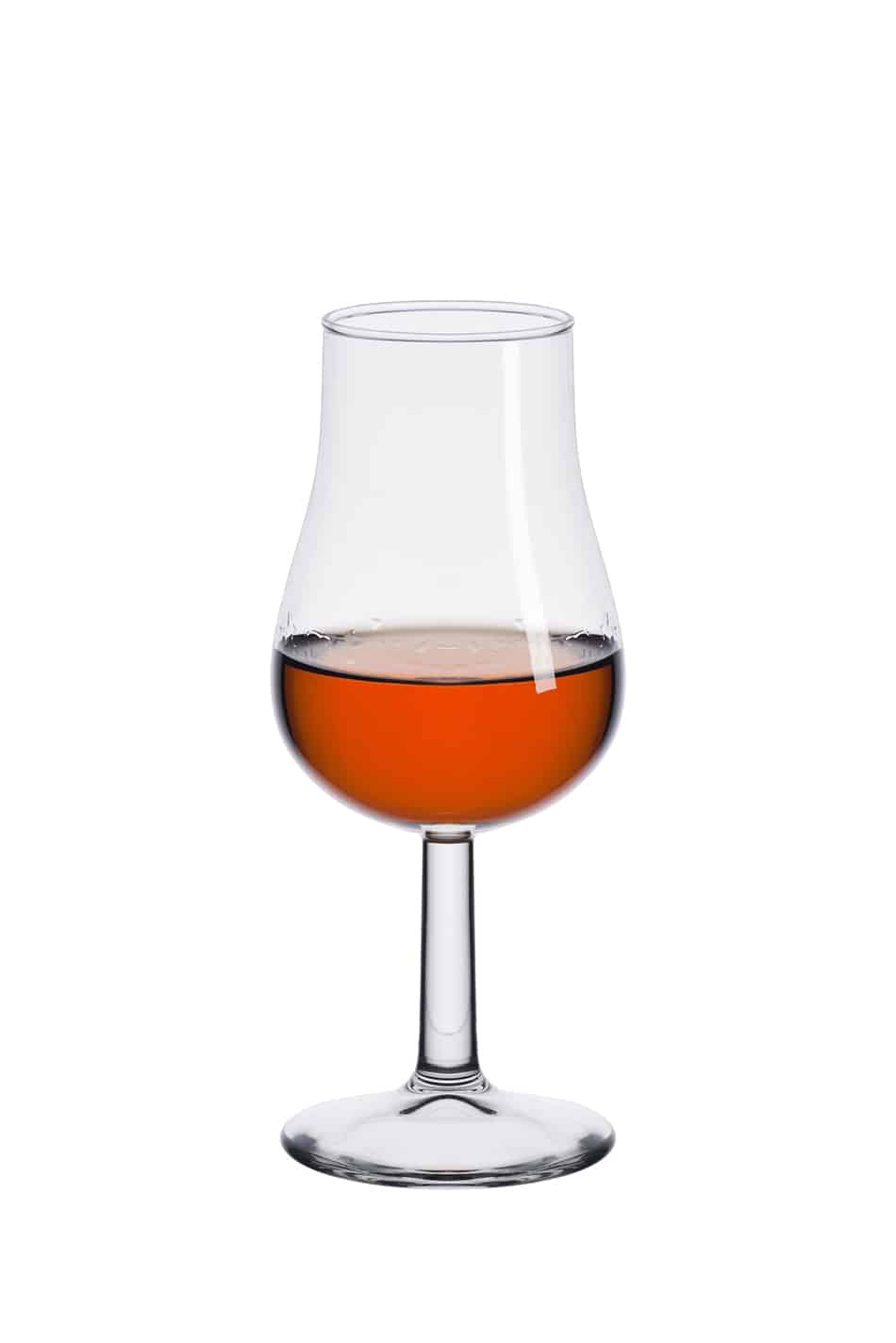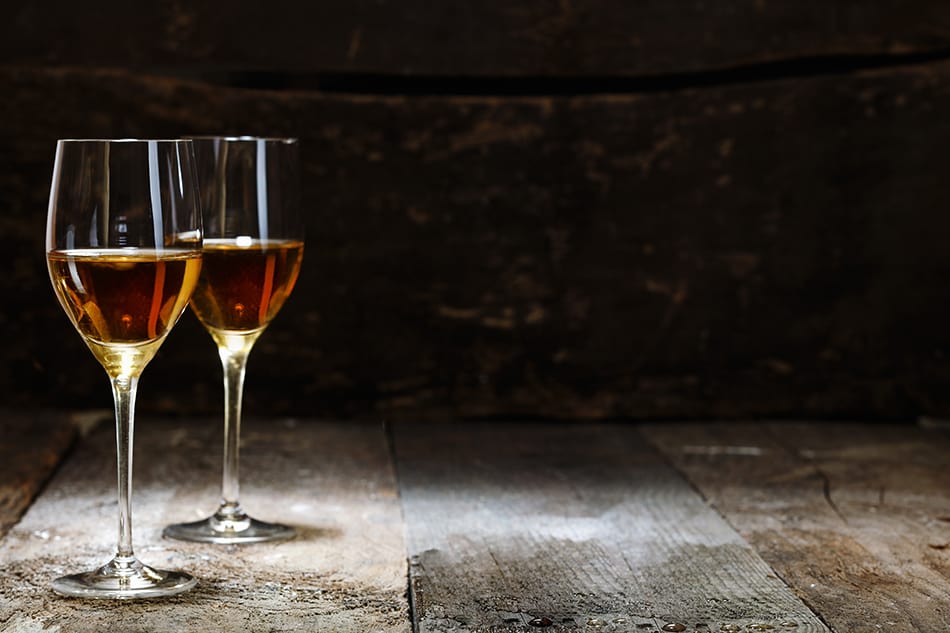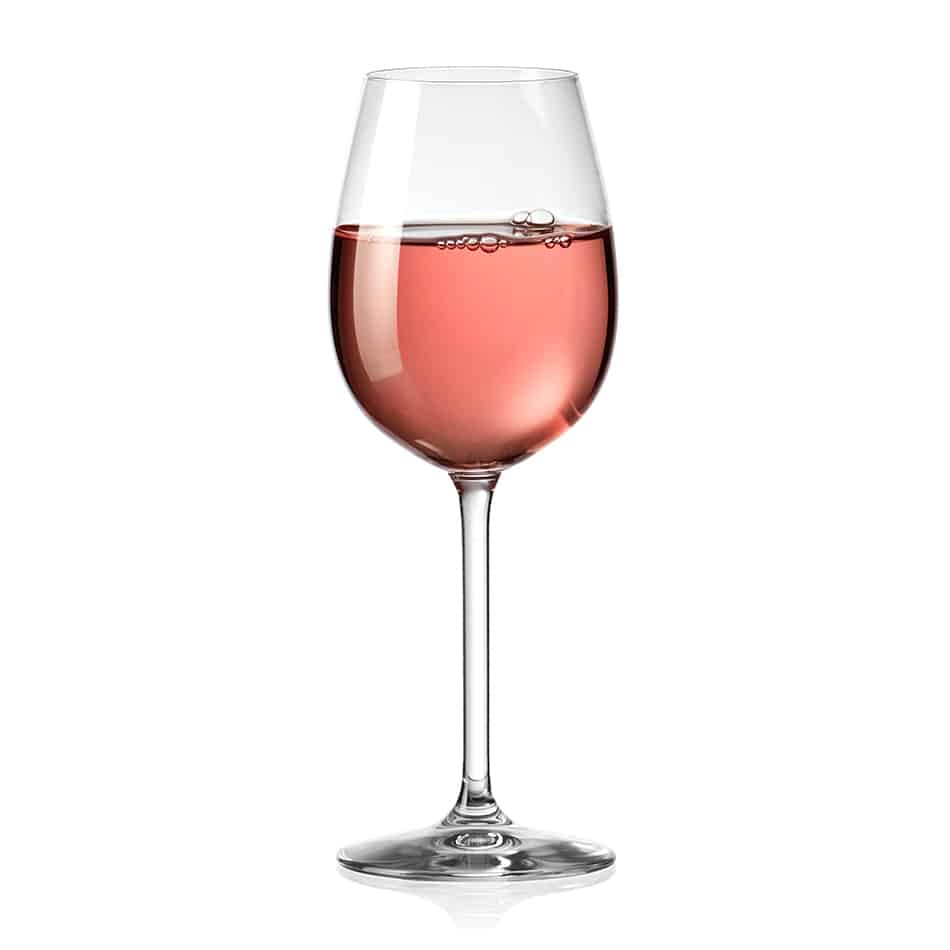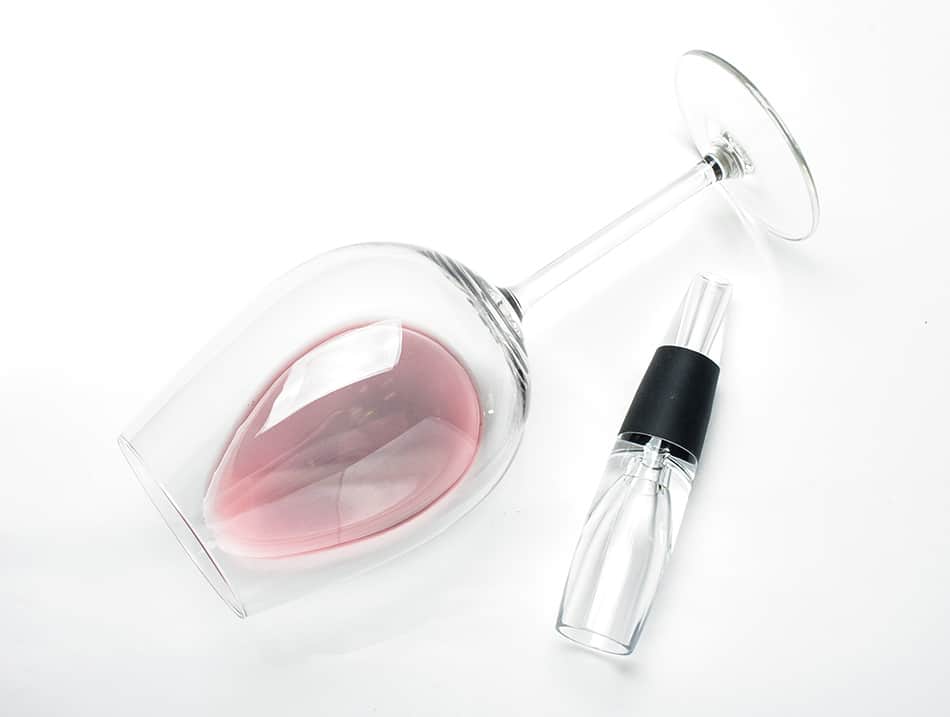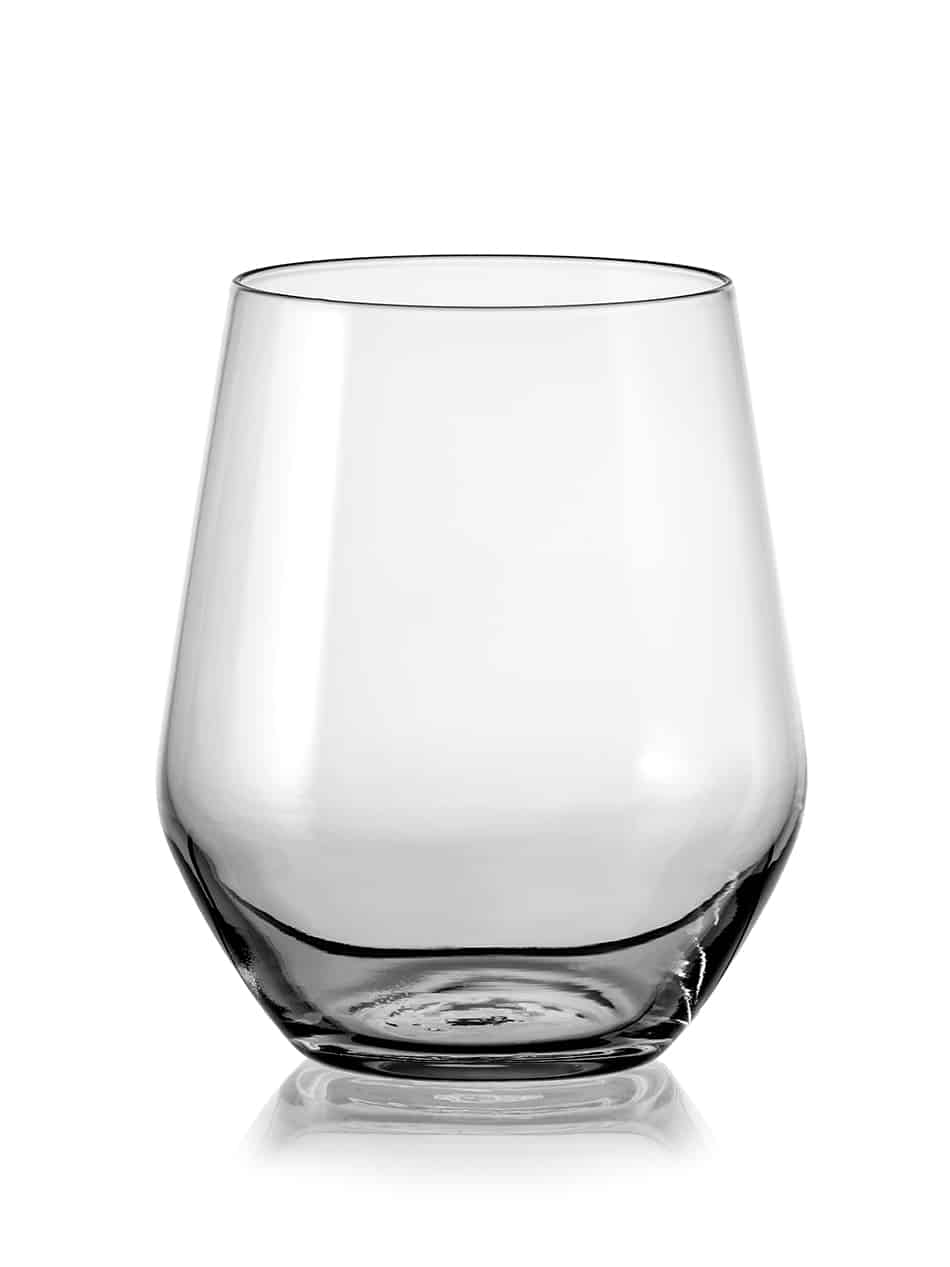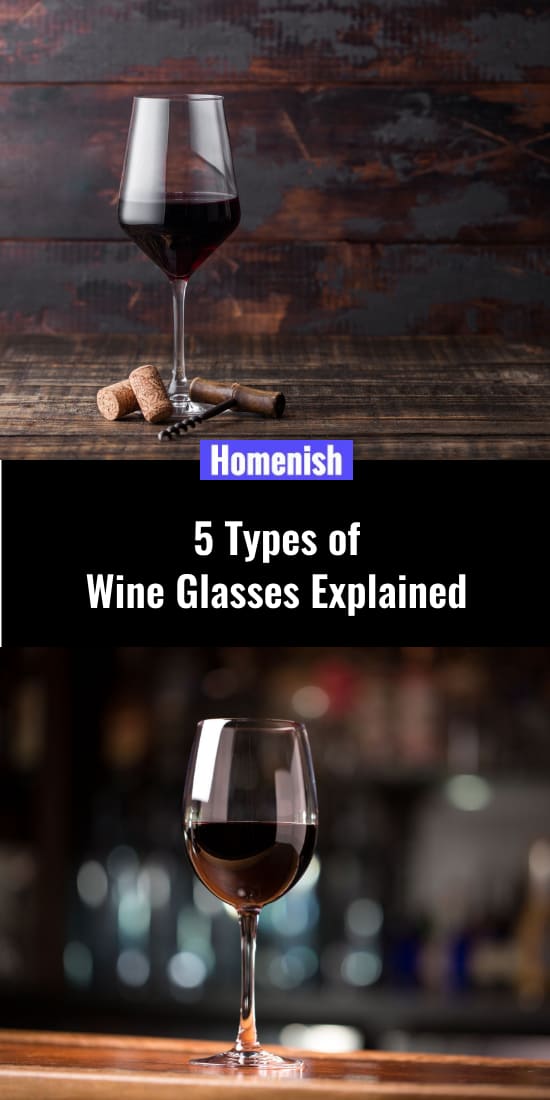Most wine drinkers have just one or two sets of glasses, typically a set for white wine and a set for red wine. This is sufficient in most cases and should have these two sets in your kitchen. But if you really want to get the most out of your wine and enjoy them exactly as they were intended, or impress your wine drinking friends, then you can invest in specialist wine glasses. There are many different types of wine glasses, with a specifically designed glass available to suit the type of wine you are serving.
1. Red Wine Glasses
Red wine glasses are generally the largest types of wine glasses. They have big, broad bowls, and a wide opening, which gives them maximum access to air and allows the drinker to dip their nose to the glass and enjoy the aroma. Rims can vary according to the flavor of the wine it is meant for.
Bordeaux Wine Glass
This is the tallest of all red wine glasses, but its shape is not as wide as other red wine glasses. Bordeaux can be one of the more bitter-tasting wines, especially if young, so the shape of this glass is designed to direct the drink to the back of the mouth, which will both maximize flavor while reducing bitterness. The height of the glass also increases the distance between the wine and the mouth, which enables greater oxygen supply to the wine, contributing to softening the tannins, which also minimizes bitterness. This type of wine glass is ideal for full-bodied wines such as Malbec and Merlot.
Cabernet Sauvignon Wine Glass
This wine glass is quite tall, though not as tall as the Bordeaux wine glass. The base of the bowl is quite broad, while the rim is narrow, giving the glass an almost pear-like shape. This shape is designed to magnify the aroma of the wine. The broad base allows the wine to breathe, while the slender top captures the smell and intensifies it. Although this wine glass is large and will hold a good amount of wine, you will find the aroma and taste is improved if you do not overfill it. Pour small amounts of wine into the glass at a time for greatest enjoyment. These glasses are ideal for Cabernet Sauvignon and other types of bold-flavored wines.
Burgundy Wine Glass
This glass is designed for more delicately flavored wines. It has a broad bowl, allowing good air contact to improve flavor, and giving the wine space to breathe. The shape of the glass means that the wine will land on the tip of the tongue first, before making its way to the back of the mouth. This ensures that the delicate flavors are better able to be picked up and enjoyed. These glasses will typically have a shorter stem to help prevent them from becoming top heavy and toppling over.
Pinot Noir Wine Glass
These wine glasses are similar to Burgundy wine glasses, but with a wider bowl. In fact, they have the widest bowl of any red or white wine glass. The large bowl means that the wine has a greater surface area with access to air, which will enhance the flavor. It is the sort of wide bowl that is good for swirling your wine in, improving air contact and taste. These glasses have a slightly shorter stem than usual to account for the large bowl. They also have a shape similar to that of a tulip, with a rim that is gently pointing outwards. This helps to direct the aroma of the wine to the user’s nose and encourages it to flow to their mouth. This glass should be used with Pinot Noir and other light red wines, but it can also be used interchangeably with a Burgundy wine glass.
Zinfandel Wine Glass
Zinfandel wine glasses are often seen as interchangeable with Bordeaux wine glasses, and though they are similar, Zinfandel wine glasses actually have a shorter stem and a marginally wider rim. It’s imperative when choosing a Zinfandel wine glass that you look for one with a thin rim, as this will allow the drink to flow easily onto your tongue, ensuring you don’t miss any of the delicate flavors. The bowl of these glasses is smaller than a Bordeaux glass but still big enough that you can swirl your wine and help to aerate it. These glasses are designed specifically for a Zinfandel but will work well with any lighter tasting wine.
2. White Wine Glasses
White wine glasses are smaller than their red wine counterparts. They tend to have a more narrow shape, which allows them to enhance flavor while still keeping the wine cool.
Chardonnay Wine Glass
A Chardonnay glass will be a similar shape to a Pinot Noir glass, but smaller. They have a balanced ‘U’ shape, with a broad bowl that is just large enough to aerate the wine and a rim that is only slightly narrowed, allowing the wine to flow onto the tip of the tongue where sweeter notes can be picked up. This relatively wide rim makes this type of glass ideal for wines that are not considered sweet enough, as the shape enhances the sweetness and balances out any acidity. It will work well with Chardonnays or other full-bodied white wines like a Semillon.
Sauvignon Blanc Wine Glass
This wine glass has a slender shape with a tall height and narrow bowl. The shape of the rim encourages the drinker to make a ‘U’ shape with their mouth, which will direct the wine to the center and front of the tongue. This is because acidity is most easily detected at the sides of the mouth, so by keeping the wine away from the sides, a smoother tasting experience will be had. The narrow shape of this glass also encourages the floral or fruity aromas of the wine to be directed towards the nose, where they can be fully enjoyed. It is ideal for drinking Sauvignon Blanc or another medium to light-bodied wines, such as Chenin Blanc, Muscadet, and Pinot Grigio.
Viognier Wine Glass
Viognier is an aromatic wine, with notes such as peach, violet, and pear. These delicate scents need to be protected, and this is best done by ensuring that the wine doesn’t come into contact with too much air. For this reason, a Viognier wine glass has a small bowl and a slightly broad rim. This allows the aroma to be enjoyed without aeration destroying it. These glasses tend to have a wide base to help with their stability because they have a low center of gravity.
Montrachet Wine Glass
This glass is perfect for wines with complex flavors. It has a large bowl that enables the wine to come into contact with plenty of air, which will help to release the flavors. It has a wide-open rim, which means the drinker can fully enjoy all of the aromas the wine has to offer, and this board opening means that the wine will also flow easily to all areas of the mouth. This is important because different regions of the palate pick up on different flavors, such as acidic or sour tastes. This type of glass is ideal for wines such as Montrachet and Meursault.
Sweet Wine Glass
Wine glasses for sweet wine have a smaller overall shape and a narrow rim. This encourages the wine to flow directly to the back of the mouth and bypass the tip of the tongue so that you do not get overwhelmed by the sweet taste, as it is the tip of the tongue that detects sweeter notes. The way that these glasses are tapered at the rim also means that despite their small bowl, you are able to swirl the wine effectively without the risk of spilling it. This is useful because the swirling motion will aerate the wine that improves acid content to help battle the sweetness, giving the wine a more mellow overall flavor. This glass is ideal for sweet wines such as Riesling, and can also be used to enjoy Zinfandel or Sauvignon Blanc.
3. Sparkling Wine Glasses
Sparkling wine glasses are long and narrow, which helps to preserve carbonation and prevent them from going flat too quickly.
Champagne Flute Glass
A Champagne flute will have a long and narrow bowl attached to a short to medium length stem. These have an elegant look that is aesthetically pleasing, but most importantly, they are designed to enhance the taste of sparkling wines. The small opening at the rim means that the wine will hit the tip of your tongue first, where sweetness can be detected before it flows over the rest of the tongue. The narrow shape also helps the aroma of the wine to be directed straight up to the nose. The perfectly upright shape helps to preserve the carbonation in the wine, whereas sparkling wine in a wider glass would quickly go flat. These glasses also have a bead at the base that encourages bubbles to congregate and be directed towards the top. A wide base is a good feature to look for in a Champagne flute to limit the chance that it will accidentally topple over. These flutes are ideal for young Champagne or sparkling wine, such as Prosecco or Cava.
Tulip Wine Glass
This wine glass is much like a Champagne flute, but with an upturned rim and slightly protruding base that gives it a tulip shape. The width of the bowl makes space for complex flavors to be released, while the narrow upper part of the glass prevents carbonation from escaping to ensure a long-lasting fizz. The upturned rim encourages aroma to flow towards the tongue instead of the nose. These glasses are great to enjoy any type of sparkling wine, but they work especially well with mature sparkling wines and Champagnes, such as Asti.
Vintage Wine Glass
These wine glasses are reminiscent of the 1920s and bring to mind decadent parties and speakeasy scenarios. They are highly decorative but are perhaps more aesthetically appealing than they are functional or practical. These glasses are shaped like a crescent moon that has been turned on its side, with a rounded base and a wide rim. The bowl is broad but shallow, which means they can only hold a small amount of liquid. This makes them useful for toasting at parties, where the act is more significant as a tradition than for actually drinking, and you won’t need to provide as much alcohol to your guests. The shape of the bowl makes them more likely to encounter spillages, as the wine will not be held in as well compared to champagne flutes or other wine glasses. Probably most notably, these glasses are inadequate for serving sparkling wine because their shape allows the wine plenty of access to air, and therefore is highly likely to lose its carbonation quickly. Their shape also encourages the drinker to hold them around the base of the bowl rather than at the stem, and this contact with warm hands means that the drink will see a temperature increase, making it less enjoyable. These days, these vintage wine glasses are more commonly used to hold cocktails, as they typically require less liquid and are not fizzy.
4. Dessert Wine Glasses
Dessert wine glasses are typically the smallest type of wine glass. Dessert wines are usually enjoyed in small quantities, as they have a higher alcohol content compared with most other wines, and have a sweet and strong flavor.
Port Wine Glass
Port wine glasses are smaller than your average wine glass because port wine has a higher alcohol content than most wines, and therefore it is drunk in smaller quantities. You should only ever fill this glass to the halfway point, to be able to fully enjoy the aroma the wine has to offer. These glasses have a narrow ‘U’ shape, with a long bowl so that the wine can be swirled around to release the aromas, and a narrow rim to hold the aromas in and prevent them from escaping. This will also enable the aromas to become concentrated. The shape of the rim encourages the wine to flow over the middle of the tongue and toward the back so that the sweetness isn’t picked up too strongly.
Sherry Wine Glass
Sherry glasses are similar to port wine glasses and are around the same size because they also have a high alcohol content with a strong and sweet taste that is usually enjoyed in small amounts. They have a long stem that is where the drinker should hold the glass to avoid changing the temperature of the sherry. The shape of these glasses directs the sherry scent to the nose, and the wine will flow over the middle of the tongue and to the back of the mouth to avoid overwhelming sweetness.
5. Other Wine Glasses
Rosé Wine Glass
There are two types of Rosé wine glasses, and what you will need depends on the type of Rosé you are drinking. For younger Rosé, a glass with a flared lip is recommended. This type of glass allows the wine to hit the tip of the tongue, where sweet notes will be picked up and enhanced. This will ensure the flavor of the wine is balanced out. For older or more full-bodied Rosé, then a glass that has a round bowl and slightly tapered rim is best. Older Rosés tend to be more naturally sweet, so this doesn’t need to be drawn out by having it arrive on the tongue tip first. Both types of Rosé glasses will have long stems so that you can hold them easily without touching the bowl, and therefore avoid warming them up from the heat of your hands. This is because Rosé is best enjoyed chilled.
Aerating Wine Glass
If you commonly enjoy a single glass of wine, then you might find using a decanter to aerate your wine a bit unnecessary. Instead, you can aerate individual glasses of wine by using an aerating wine glass. These glasses have an aerating cell in the center of the glass, which you can pour wine directly into.
Stemless Wine Glass
Stemless wine glasses are all-purpose wine glasses that have become popular because of their contemporary style. They have the same shaped bowl as stemmed wine glasses, but simply lack the stem. Though this might be appealing from a style point of view, it doesn’t work especially well in terms of functionality. This is because you will need to hold a stemless glass in the palm of your hands, which will heat up the wine. Red wine should be served at room temperature, while white wines are best enjoyed chilled. Affecting their temperature by holding them in your hands can diminish the enjoyment of the wine. The benefit of these glasses is that they are less likely to accidentally be knocked over as they are more stable than stemmed glasses, which might be appealing if you lose a lot of glasses from breakage.
